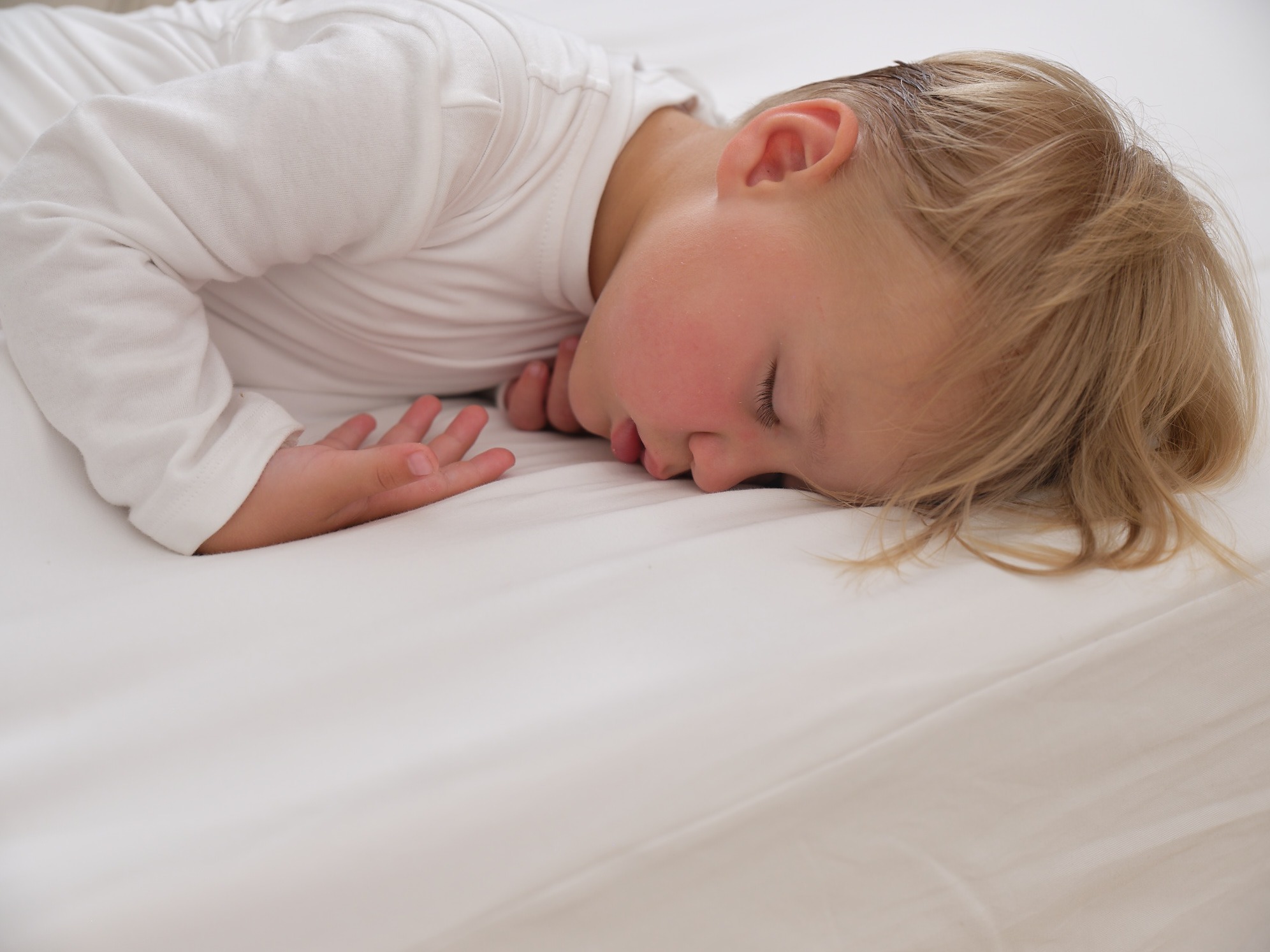
GET STARTED WITH A FREE CUSTOM SCHEDULE AND PLAN OVERVIEW ON OUR MOBILE APP →
TRY BATELLE FOR FREE →

Every parent is concerned for the health and well-being of their child, and many struggle with deciding whether or not their baby’s sleep difficulties warrant a trip to the pediatrician. Parents are often surprised to learn that their baby’s worrisome symptoms are actually a part of normal infant behavior.
Sleep is critical for health and development, but some infants struggle with inadequate and/or disrupted sleep. This can be particularly distressing for new parents who may be unfamiliar with common infant sleep problems that can often be improved with changes in sleep hygiene or sleep training.
With the exception of several symptoms where a child’s health could be at immediate risk, time and careful monitoring are often the best tools for determining whether or not a child’s sleep issues require medical intervention. Importantly, symptoms and behavior that require immediate emergency care include:
“Time and careful monitoring are often the best tools for determining whether or not a child’s sleep issues require medical intervention.”
Other symptoms may suggest the presence of sleep disorders that may or may not require examination by a healthcare provider. Sleep apnea, for example, is a breathing disorder that causes pauses or a reduction in breathing during sleep. This disorder can occur in infants and requires treatment by a medical professional. Parents should contact their child’s doctor if they observe any of the following sleep symptoms:
Your child’s pediatrician will determine how urgently your child should be seen and any additional testing or care that may be required. Nurse lines, available through many health insurance companies, can also be helpful resources after hours or on weekends.
Parasomnias are an additional group of sleep disorders that can occur in infants. The four types of pediatric parasomnias are:
Importantly, all four types of pediatric parasomnias are common and generally do not require medical intervention. Nightmares, which occur during REM sleep, can begin as early as 18 months of age and are a normal part of child development. Sleepwalking is most common in boys between the ages of five and 12, and sleep talking, like most parasomnias, typically resolves by adolescence. Night terrors, in contrast, occur during non-REM sleep, and a child may sweat, sit up and/or scream during sleep for up to 20 minutes during an episode. Night terrors are distressing but rare, affecting only between one and six percent of children.
“Your child’s pediatrician will determine how urgently your child should be seen and any additional testing or care that may be required.”
Typically, parasomnias occur occasionally and won’t regularly disrupt sleep. If these sleep disorders are occurring more often, however, and are regularly impacting your child’s sleep, improvements in sleep hygiene and sleep training can reduce the frequency of episodes and help your infant fall back to sleep on their own. Pediatricians may also have additional resources for children that suffer from frequent sleep disruptions.
Another common sleep problem parents face with infants is nightwaking, when babies wake up during the night and cry. This is typical behavior for newborns, who sleep for shorter amounts of time between smaller feedings. Babies at three or four months of age, in contrast, can often sleep up to five hours at one time between larger feedings. Babies six months and older, however, are physiologically capable of sleeping through the night without feedings, but up to 50% of babies in this age group will still wake up and cry during the night.
Nightwaking is entirely normal—in fact, every child will wake briefly between four to six times per night as part of their normal sleep. The difference between infants that nightwake and cry and those that nightwake and fall back asleep is the child’s ability or inability to self-soothe and fall asleep on their own. Some children are capable of self-soothing on their own, while others need to be taught through sleep training.
“Nightwaking is entirely normal— the difference is in the child’s ability or inability to self-soothe.”
There are simple steps parents can take to make nighttimes more predictable and help babies learn to self-soothe and fall asleep on their own. These steps include:
Many babies will benefit from these sleep hygiene measures, but some children may need additional medical interventions to improve sleep. Feeding intolerances, acid reflux, enlarged adenoids and abdominal pain can make it difficult for babies to sleep regardless of sleep training and hygiene measures, and a combination of both medical and sleep training interventions will be most beneficial for these children.
It can be difficult for parents to know when their baby’s sleep issues require a trip to the pediatrician, but fortunately, many professional, trustworthy resources exist to help parents navigate the more common sleep problems associated with infancy. Importantly, these resources can help not only babies feel and sleep better, but their concerned parents, too.
Liability disclaimer:
All information contained in this article is intended to be general and/or educational in nature and is not a substitute for professional healthcare assistance, diagnosis, guidance or treatment of any health condition. The article provides only general information for individuals to discuss with their healthcare provider and does not constitute a medical diagnosis, treatment or endorsement of any specific medical test, treatment, procedure, service, etc.
